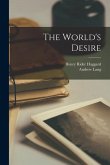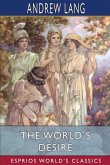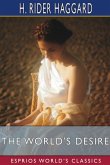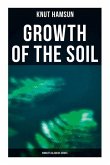The World's Desire is a fantasy novel first published in 1890 and written by H. Rider Haggard and Andrew Lang. It was published in paperback by Ballantine Books as the fortieth volume of the Ballantine Adult Fantasy series in January 1972. The World's Desire is the story of the hero Odysseus, mainly referred to as "the Wanderer" for the bulk of the novel. Odysseus returns home to Ithaca after his second, unsung journey. He is hoping to find a "home at peace, wife dear and true and his son worthy of him". Unfortunately, he does not find any of the three, instead his home is ravaged by a plague and his wife Penelope has been slain. As he grieves, he is visited by an old flame, Helen of Troy, for whom the novel is named. Helen leads him to equip himself with the Bow of Eurytus and embark on his last journey. This is an exhausting journey in which he encounters a Pharaoh who is wed to a murderess beauty, a holy and helpful priest, and his own fate. (wikipedia.org)








